Well it's official, next month I'll be on my way to Prague, Vienna, and Budapest! Picture me doing my best Kermit the Frog impression - my arms flapping wildly around my head while I scream!!
My lovely traveling companion is intent on sampling the historic deserts and coffee of these three cities to refuel her passion for cooking and I'm excited about the natural history and medical museums, like the Naturhistorisches Museum and the Josephinum Medical Museum.
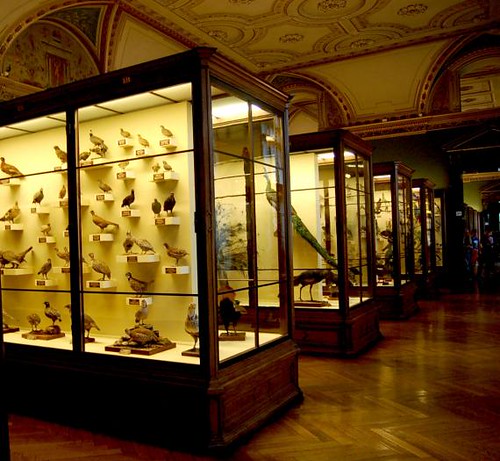
Naturhistorisches Museum, Vienna
I think we both agree on our excitement to see antique stores, lots of art, and beautiful architecture!!!
In addition to learning a few words of Czech, German, and Hungarian, I've been doing a bit of reading. I read Rick Rodgers' wonderful and exhaustive book on the deserts and coffeehouses of central Europe: "Kaffeehaus: Exquisite Desserts from the Classic Cafes of Vienna, Budapest, and Prague." The top three on my list are in Vienna: Café Sacher, Demel (bakery and coffeehouse), and Café Central.

Café Sacher, photo from website blog.hotelclub.com
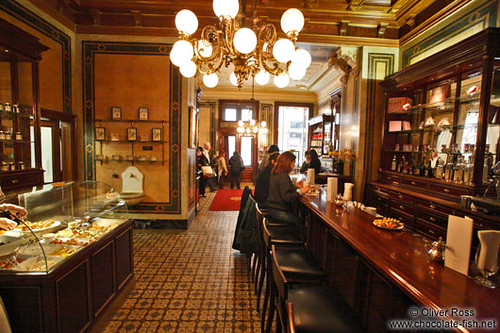
Demel Bakery, photo from website www.chocolate-fish.net
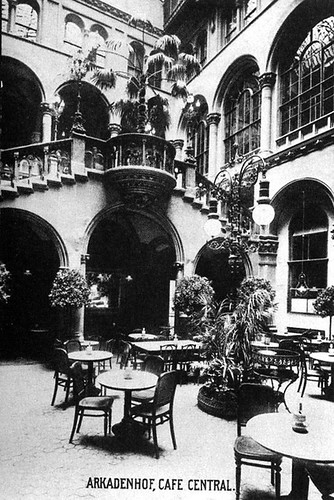
Photo from Christian Brandstatter's book Vienna 1900: Art, Life, & Culture.
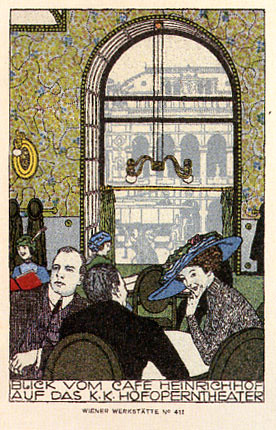
Lithograph by Gustav Kalhammer "View of the Hofoperntheatre form Cafe Heinrichhof," 1912, from Christian Brandstatter's book Vienna 1900: Art, Life, & Culture.
I'm now reading Christian Brandstatter's book "Vienna 1900: Art, Life, & Culture." It's a great overview of Viennese culture: music, fashion, art, architecture, politics.
Some visual highlights from that book...
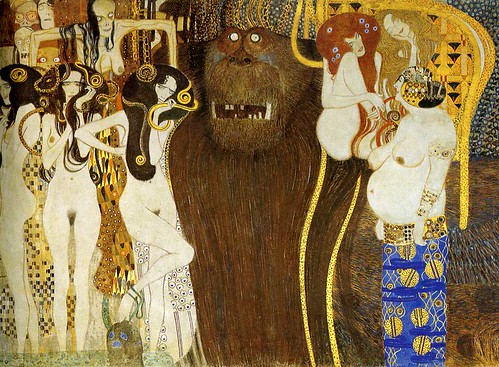
Gustav Klimt's Beethoven Frieze, 1902 - click image for larger version
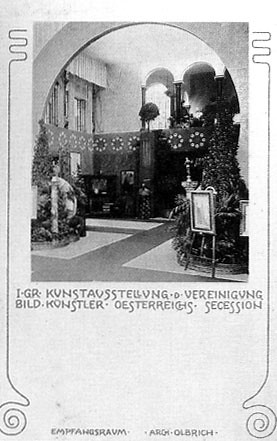
Advertising postcard for the Secession building, 1898
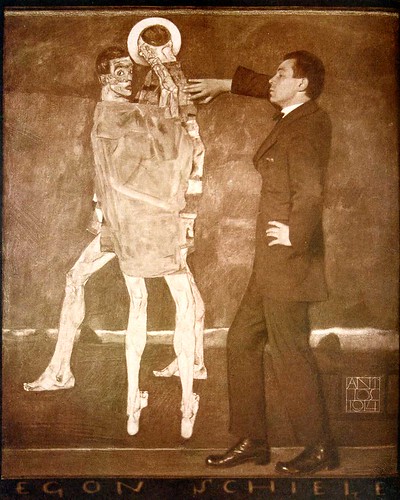
Egon Schiele before his painting Begegnung (Encounter), 1914
I am so excited to visit the Secession building and see Gustav Klimt's Beethoven Frieze. I saw a beautiful reproduction of it at the Neue Gallerie's Klimt exhibition in 2008, in NYC. I was also able to see the Egon Schiele 2006 Neue Gallerie exhibition and now I will be able to see their work in their hometown!
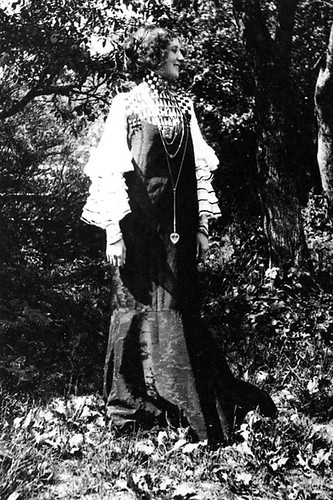
Emilie Flöge in "Concert Dress" designed by Gustav Klimt, 1906
Emilie Flöge was the longtime companion of Gustav Klimt. She was a fashion designer and part owner of the Flöge Sisters salon, an important part of the Viennese fashion industry. The neck line of the dress above is so amazing. I'd love to sew some sort of collar thing as an homage. Hum...
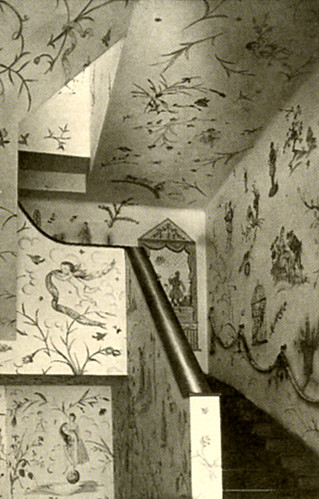
Wiener Werkstatte, stairs leading to fabric dept. salesroom
I'm also looking forward to see the Wiener Werkstatte Museum. From 1903 to 1932, the Wiener Werkstatte was a workshop and a collection of craftsmen and artists working in almost every medium. The Architonic website says this:
At the turn of the century around the year 1900 the city of Vienna was, next to Paris, one of Europe’s leading cultural centres. This was due to the rise of the middle classes, who were in the process of emancipating themselves from the model provided by the aristocracy and were searching for ways in which they could express themselves individually in art, architecture and music. Against this background the members of the artists’ association ‘Secession’ and Vienna’s Kunstgewerbeschule, the college of arts and crafts, founded the Wiener Werkstätte (Vienna Workshop) in 1903. This became a brand in itself and developed into a company which marketed not just furniture and small articles of everyday use made of glass, ceramics, silver and metal, but also jewellery and clothing – in line with the spirit of art as a holistic concept.
And in Vienna we plan on seeing the opera. Faust or Tosca are the operas being performed when we're there. I'm leaning toward Faust.
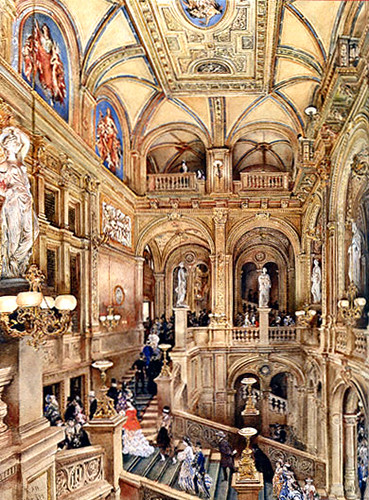
Watercolor painting by Rudolf von Alt, "Grand Staircase of the Vienna Hofoper," 1873
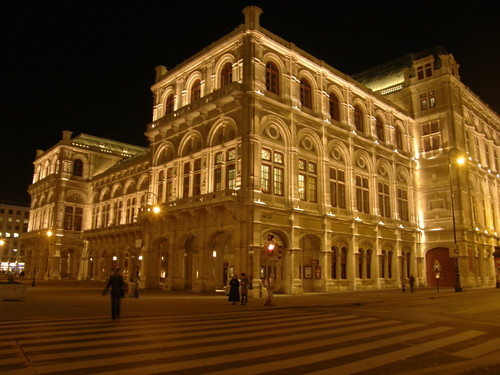
Hofopern Theatre (Vienna State Opera House) from website www.thetravelen.com.
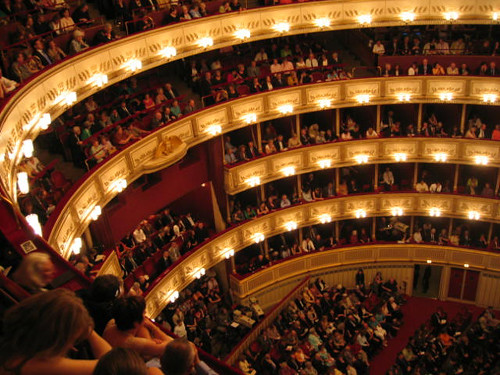
Interior of Hofopern Theatre (Vienna State Opera House) from website www.thetravelen.com.
So much to think about and research before I leave...oh and packing! My next step is to learn more about Budapest.
Mmm, this sounds like a trip full of culture, I also imagine that there will be fun and good food along the way, please ... enjoy and take lots of pictures to share. Bon Voyage!
ReplyDelete